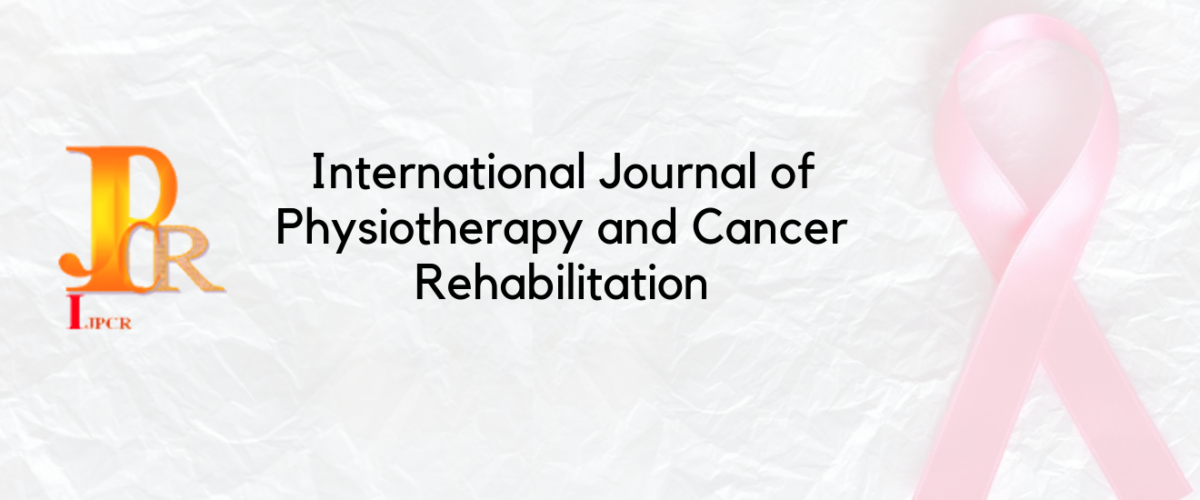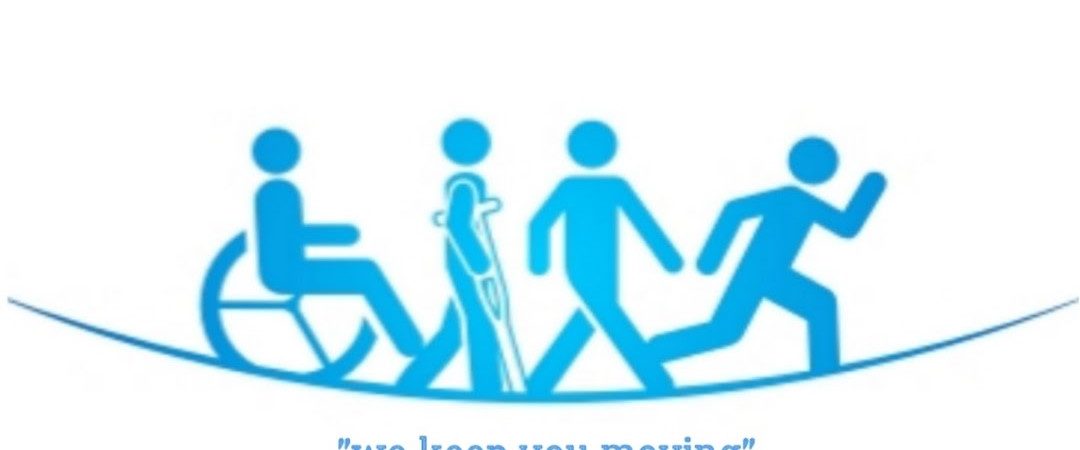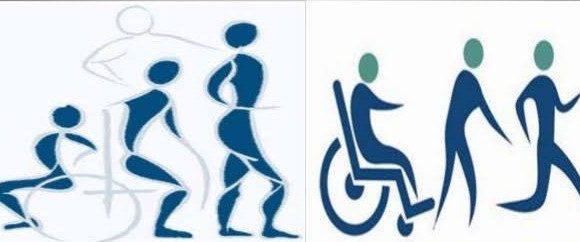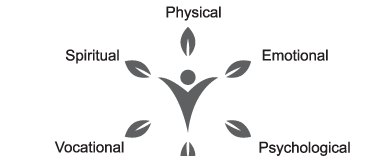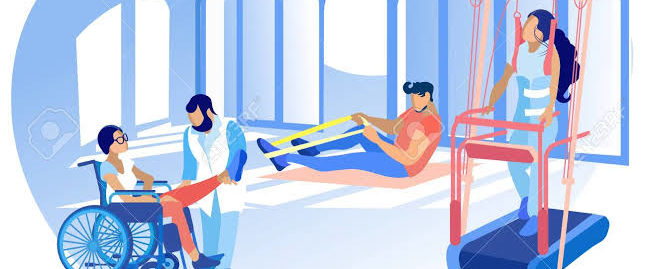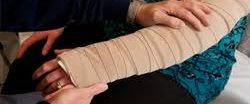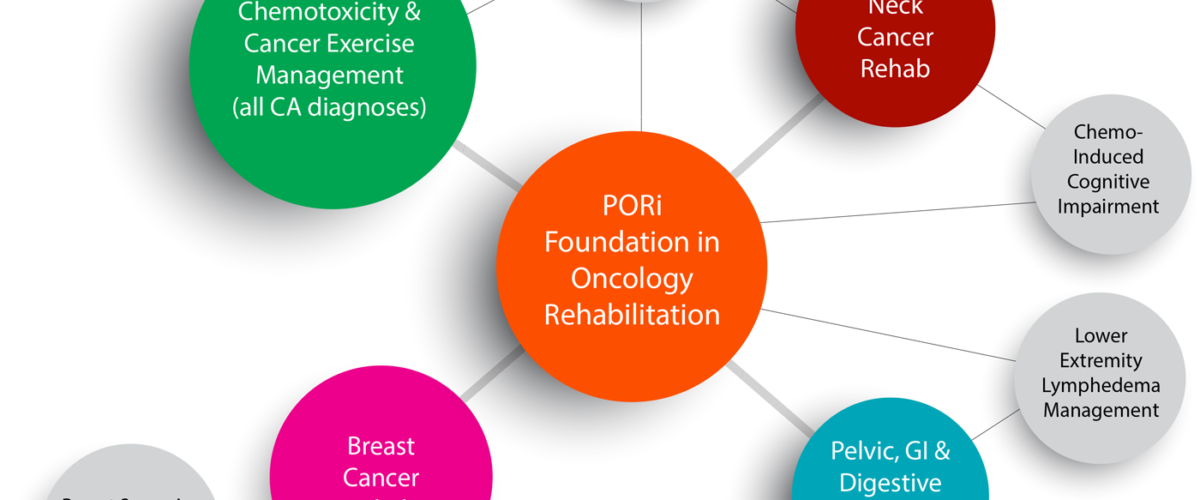EFFECT OF HIGH-VELOCITY LOW AMPLITUDE THRUST SPINAL MANIPULATION ALTERS SEGMENTAL INSTABILITY, PAIN INTENSITY, AND HEALTH-RELATED QUALITY OF LIFE AMONG PATIENTS WITH CHRONIC NON-SPECIFIC LOW BACK PAIN: A RANDOMIZED CONTROL TRIAL-Jasobanta Sethi1*, Kanchan Kumar Sarker2, Umasankar Mohanty3.
Effect of high-velocity low amplitude thrust spinal manipulation alters segmental
instability, pain intensity, and health-related quality of life among patients with
chronic non-specific low back pain: A randomized control trial.
Jasobanta Sethi1*, Kanchan Kumar Sarker2, Umasankar Mohanty3.
1Professor & Director, Amity Institute of Physiotherapy, Amity University, UP, Noida-201313,
India. email- jasobantsethi@yahoo.co.in
2PhD scholar, Department of Physiotherapy, Lovely Professional University, Phagwara,
Punjab, India. email- dr.k.k.sarker@gmail.com
3Professor & Founder, Manual Therapy Foundation of India, Mangalore, Karnataka, India.
email- prof.mohanty@gmail.com
*Corresponding author
Prof. (Dr.) Jasobanta Sethi, MPT, PhD, FIAP
Amity Institute of Physiotherapy, Amity University,
UP, Noida-201313, India.
E-mail: jasobantsethi@yahoo.co.in
Mobile No +91-9988600462
Effect of high-velocity low amplitude thrust spinal manipulation alters segmental
instability, pain intensity, and health-related quality of life among patients with
chronic non-specific low back pain: A randomized control trial.
ABSTRACT
BACKGROUND-Chronic non-specific low back pain (NSCLBP) is the single largest, common,
complex musculoskeletal condition in the world and it’s estimated that 80% of the
population have experienced almost in every adult individual’s life. The purpose of
this study was to investigate the effectiveness of spinal manipulation therapy- high
velocity low amplitude thrust (SMT-HVLA thrust) changes in pain intensity and
segmental instability and quality of life in patients with CNSLBP.
Materials and Methods: Randomized controlled trial conducted on 105 patients with
CNSLBP (with duration of pain more than 3 months) distributed in three groups with
35 participants in each group and an average age of the participants was 25.66
(SD=6.74) years. Participants receiving the SMT-HVLA thrust with ergonomic advice
(Study Group-1), core stability exercise with ergonomic advice (Study Group-2), and
supervised exercise with ergonomic advice (Control Group) were assigned in three
groups for intervention for 4 weeks. Primary outcomes were pain intensity measured
by a 0 to 10 numeric pain rating scale and postural sway (center of foot pressure)
measured by Win track Platform and quality of life measured by EuroQoL
questionnaire at 2 weeks and 4 weeks. Univariate analysis of variance (ANOVA) with
post-hoc Tukey’s multiple comparison tests was carried out to examine treatment
effects and the relationship between groups changes across outcome measures.
Results: For all three treatment groups, outcomes checked after 2 weeks of treatment.
Those who received spinal manipulation therapy with ergonomic advice had slightly
better outcomes than the supervised exercise and advice group at 2 weeks
(between-group difference, pain intensity (P=0.001), segmental instability (P=0.001)
and quality of life (P=0.001) as compared to core stability exercise with ergonomic
advice and supervised exercise and ergonomic advice group at 2 weeks (between
group difference, pain intensity (P=0.03), segmental instability (P=0.04) and quality of
life (P=0.05) as well as at 4 weeks (between-group difference) in pain intensity
(P=0.05), segmental instability (P=0.03), quality of life (P=0.04).
CONCLUSION: The SMT-HVLA thrust with ergonomic advice providing substantial pain
reduction in patients with CNSLBP of high severity was associated with clinically
significant improvement in segmental instability and health-related quality of life.
Thus spinal manipulation therapy may be an attractive option in such patients before
proceeding for more invasive and costly treatments.
Keywords: High-velocity low amplitude thrust, core stability exercise, supervises exercise.
INTRODUCTION
Chronic low back pain is a common health problem in many develop and developing
countries. Individuals suffering from chronic low back pain experience major physical,
social, mental, and occupational disruptions. [1] It is not only one of the leading
causes of pain but also of a costly burden on the healthcare budget as chronic low
back pain leads to a frequent demand for medical services.[2] In the case of low back
pain, epidemiological data give more information to assist in seeking and solving the
various problems related to low back pain. Moreover, these data can prevent low
back pain by avoiding or decreasing risk factors for individuals. The prevalence of low
back pain has been inspected in some systematic reviews. According to the World
Health Organization, low back pain is most common among the ages of 25 to 62
years [3] peaks between ages 35 and 55 years [4], workforce and high prevalence in
the age between 30 to 50 years is reported by Eurofound. [5] Reported lifetime
prevalence ranges widely, from 56% to 70%, as does 1-year ranges from 15% to 45%,
and point prevalence from 12% to 30%.[6]
Low back pain is generally explicated as pain, muscle tension or stiffness confined under the
costal margin and above the inferior gluteal folds, with or without leg pain (sciatica).
Low back pain is predictably categorized as being “specific” or “non-specific.” Specific
low back pain makes mention of symptoms as an effect of a specific pathophysiologic
mechanism, for example, hernia nucleus pulposus (HNP), infection, inflammation,
osteoporosis, rheumatoid arthritis, fracture or tumor. Approximately 10% of the
patients might specific underlying conditions be diagnosed.[7] The majority of patients
(up to 90%) are categorized as having non-specific low back pain, which is described
as symptoms lack of clear particular reasons, i.e. beginning of low back pain is not
know. Non-specific low back pain is generally categorized according to duration as
acute (less than 6 weeks), sub-acute (between 6 weeks and 12 weeks) or chronic
(longer than 12 weeks). [8]
According to the Punjabi concept, the spinal stabilization system depends on the three
subsystems which are interdependent components with one capable of
compensating for deficits in another.[9] In low back pain can occur as a consequence
of deficits in control of the spinal segment when abnormally large segmental motions
cause compression or stretch on neural structures or sensitive structure.[10] These
deficits may potentially be caused by a dysfunction in any of the three systems which
late a loss of joint stiffness, abnormal spinal motions, excessive neutral zone, and
changes in the ration of segmental rotations and translation and increasing the
segmental instability.[11]
Pain is, therefore, not only a clinical sensory experience (duration, severity, and quality of
pain), but is also something that adversely affects the individual’s everyday life and
health-related quality of life.[12] Pain affects health-related quality of life and health
related quality of life may affect the pain experience, expression, and behavior. A
relatively small amount of nociception and physical pain can start a vicious circle of
more pain, suffering, disability and poorer health-related quality of life.[13] In studies
on the relationships between chronic pain and interference with daily life as well as
HRQoL, different factors have been shown to be important. Some studies have
reported interference with daily life and impaired HRQoL to be related to pain
severity and the number of pain locations (spread).[14,15,16] However, the relationship
between HRQoL impairment and pain severity alone has been shown to be weak. [24]
Some authors have found pain severity to be insignificant as a predictor for life
interference, HRQoL impairment, and disability.[17]
Spinal manipulative therapy includes all procedures of mobilizing or adjusting the spine by
means of the hands. A manipulation usually implies a single thrust of high velocity
performed at the end of a passive movement after the ‘slack’ has been taken up, and
over small amplitude. It goes beyond the physiological limit but remains within the
anatomical range. The precision of the movement and control of the applied force
are required.[18] Spinal manipulative therapy is a valuable method in the treatment of
mechanical spinal disorders to reduce pain and improve segmental instability.
Although it has not been scientifically validated, some studies have shown a
beneficial effect.[19,20] The objective of Cyriax’s spinal manipulative techniques is to
alter the discodural or discoradicular interaction by moving a displaced cartilaginous
fragment away from the sensitive dura mater and dural nerve sleeve and ruptured of
ligamentous adhesion, reduced a bony sub-luxation. Spinal rotation manipulations
apply torsion stress throughout a whole part of the spine, not only at just one level.
With an intact posterior longitudinal ligament and annulus fibrosus, some of this
torsion force exerts a centripetal force by suction on the protruding disc material.[21]
This effect is not confined to one level and full reduction is not absolutely necessary
for pain relief, in that when contact between dura and disc has ceased the problem is
frequently solved and improve the segmental instability and health-related quality of
life.
Exercises for low back pain have developed more than the era of time with specific stress on
the sustaining the spinal stability.[22] These types of core stabilization exercises are
aimed at improving the neuromuscular control, endurance, strength of muscles
central to sustaining dynamic segmental stability. Transversusabdominis (TrA),
lumbar multifidi, and other paraspinal, abdominal, diaphragmatic, and pelvic
musculature are targeted in core stabilization exercises. Different studies have
reported delayed activation of TrA with respect to erector spinae with significant
atrophy of multifidus in subjects with chronic low back pain. The European Guidelines
for Management of CNSLBP recommends supervised exercise therapy as a first-line
treatment.[23] Different systematic reviews conducted in the past decade have raised
a significant concern over the role of exercise in the management of low back pain,
with the scarcity of concrete evidence supporting any specific type of exercise; e.g.
flexion / extension biased, strengthening of abdominals.
This paper presents a pragmatic clinical study conducted on patients with non-specific
chronic low back pain. An objective of the study was to evaluate the efficacy of spinal
manipulation therapy on pain intensity, health-related quality of life and segmental
instability among patients with NSCLBP.
MATERIALS AND METHODS
This randomized trial was conducted from August 2015 to January 2017 at Out Patient
Department (OPD), Department of Physiotherapy, Lovely Professional University
(LPU), Chaheru, Phagwara, Punjab, India. Ethical approval has been granted by the
Institutional Ethical Committee (No-LPU/IEC/PTY/004).
Patients’ enrollment:
105 participants have been recruited in this study according to inclusion criteria and
distributed in three groups of 35 patients each; Control Group (CG:18 males and 17
females), Study Study-1(SG-1: 16 males and 19 females), and Study Group-2 (SG-2: 19
males and 16 females). Patients had the opportunity to participate in the trial if they
suffered for more than 3 months with a history of chronic non-specific low back pain,
were aged between 18-60 years, and pain intensity (PI) ≥ 3 on 0 to 10 Numeric pain
rating scale (NPRS). Participants were excluded if they have a baseline pain score of
fewer than 3 points,[24] pain referred from the lumbar to lower extremities, serious
spinal disorder, including malignancy, osteoporosis, ankylosing spondylitis, cauda
equine compression and infection, previous spinal surgery, fracture of vertebrae,
administered epidural injection.
Randomization
All patients met the inclusion/exclusion criteria and enrolled in the study. Patients who
agreed to participate signed the consent document approved by the Institutional
Ethical Committee. Sample size calculation was made taking into account a one-tailed
hypothesis (subjects in three groups were expected to improve), an allocation ratio
between groups of 1:1:1, a large effect size (d=0.8), an alpha value of 0.05 and z
value of 1.96 for a 95% confidence level. And margin of error 5%. Thirty-five patients
per group were necessary to complete the study. Restricted randomization with a
1:1:1: allocation ratio has been applied using randomly block size. All participants
fulfilled the remainder of the self-report and a physical examination. Each participant
received general information about research (possible risks and benefits) and the
ethical aspects related to it. The following self-report questionnaires were fulfilled by
patients at the baseline examination: demographic data (age, height, and weight),
numerical rating scale for pain intensity, Win Track platform (center of foot pressure)
for segmental instability, and EuroQol questionnaire (EuroQoL questionnaire-5D-5L
has 5 dimensions and 5 levels) for quality of life. For self-report measures, the
patients have undergone a standardized historical and physical examination (manual
palpation of the lumbar and sacral to assess local tenderness of segmental
dysfunction/hypomobility) which was replicated following achievement of 2 weeks
treatment.
Intervention
The participants were assigned into three groups by consecutive convenient sampling, each
group with 35 patients. All participants in the study received 2 weeks of treatment.
The control group received supervised exercise with ergonomic advice (SE+EA) alone,
study group-1 received spinal manipulation therapy (SMT) with ergonomic advice
(SMT+EA), and the Study Group-2 received core stability exercise with ergonomic
advice (CSE+EA) 45 minutes per day for 2 weeks.
Supervised exercise and ergonomic advice (SE+EA)
The Control Group (CG) had received supervised exercise with ergonomic advice (SE+EA) of
45 minutes sessions. Individualized sessions included advice and instruction on self
care measures, such as the use of ice and heat, ergonomic recommendations for
home and work, and a demonstration of good lifting techniques. Simple stretching
and strengthening exercises, including lumbar extension, bridging, and abdominal
crunches, were demonstrated and practiced. Study participants were given a book
and laminated cards describing these exercises and were encouraged to perform
them at home on a daily basis.[25]The patients were followed up in person 2 weeks
later and then instructed to continue with the exercises for the remainder of the
intervention phase. We considered the program to be of low dose because of the
simplicity of the exercises, the time required to perform them (2–3 minutes per
series), and the low number of provider visits.
Spinal manipulation therapy plus ergonomic advice (SMT+EA)
The participants allocated to this group (Study Group-1) have received spinal manipulation
therapy in addition to ergonomic advice (as described above). Spinal manipulation
was delivered after a systematic physical examination that included manual palpation
of the lumbar and sacral areas to assess local tenderness areas of segmental
dysfunction/hypomobility. Spinal manipulation technique for CNSLBP was generally
performed on patients in a side-lying position on a treatment couch with the affected
side upward. The therapist was to stand at the ventral aspect of the patient and
holds the upper spinous process of the affected segment with the pulp of the thumb
and the index finger as well as holds the spinous process of the lower vertebra of the
affected segment with pulp and index finger of the other hand. The therapist hold
the arm of the patient and pulls it to create rotation and stops as soon as the
movement was perceived at the affected facet joints than therapist applied the
spinal manipulation therapy-high velocity low amplitude [HVLA] thrust while applying
the force to the upper vertebra towards the couch and the lower vertebra away from
the couch.[26]This thrust was often accompanied by an audible cracking or popping
sound, which represents the creation and suspension of small gas bubbles within the
joint cavity resulting from pressure, alters as the articular surfaces shortly split in
response to the HVLA thrust.[27]
Core stability exercises plus ergonomic advice (CSE+EA)
The patients received core stability exercise in addition to ergonomic advice (as described
above). The protocol has been delivered for the duration of 45 minutes to perform
exercises emphasizing a high number of repetitions (two to three sets of 15 to 30
repetitions for each exercise) and progressive increase in muscle load. For each
exercise, the patients started at a level of difficulty that allowed them to complete a
minimum of 15 repetitions at the session. They then progressed to the next level of
difficulty when they were able to perform the maximum number of repetitions 30.[28]
Core stability exercises were a plank, oblique plank, and Superman. Plank procedure
was i) presupposed a frontage sustain situation resting on subjects forearms with
shoulders straight over subjects elbows, ii) set straight subject’s legs out behind
subjects and it was raised up hips to form a dead-straight line from shoulders to
ankles. Subjects were balanced on forearms and toes, with lower abdomen and back
working to keep the body straight. Holding was 1 minute and 15 to 30 repetitions. 2)
Oblique Plank-i) patients position were the side laying, balance on the right forearm
with shoulder beyond the elbow, ii) with legs was out directly to the left pelvis so
that balance on forearm and feet. The patient’s body was appearance a direct line
and feel the oblique muscles down the side trunk working to maintain the position,
iii) hold times were 1 minute then replicate on another side, 15 to 30 repetitions. 3)
hanuman-i) Position of the patients was put the balance on the floor on hands and
knees. The back was flat and hips equivalent to the floor, ii) elevated right arm out in
front of subjects and elevated left leg out after patients, maintenance it directly, iii)
hold times was 1 minute and the replicate on the other side, 15 to 30 repetitions.
Numeric pain rating scale (NPRS)
The NPRS is a line marked with the numbers 0–10 at equal intervals where 0 is ‘no pain’ and
10 is ‘worst pain imaginable.’ Patients circle the number that represents their current
pain intensity. There is evidence to support the validity and reliability of the NPRS in
younger [29] and older [30] patients. Psychometric analyses suggested that the NPRS
was the preferred pain intensity scale. It had low error rates, and higher face,
convergent, divergent and criterion validity than the other scales. Most importantly,
its properties were not age-related.[31] Pain intensity was measured before and after
treatment.
Measurement of the center of foot pressure (COFP)
The capability to maintain balance in an upright standing posture was supervised using a
Win Track platform (Win-Track, company-Medicapteurs, n0-12k0022, Made in
France), which measures the segmental instability (i.e., the movement of the center
of foot pressure) in the anterior-posterior (X) and side-to-side (Y) directions. The
participant stood quietly on either a solid platform (i.e., directly on the force plate)
for a period of 30 seconds while blindfolded and wearing socks without shoes. The
first 30 seconds of data were recorded at a sample rate of 1200 Hz using monitor
data acquisition software (WinTrack Software).[32,33] Stance Positions: Each
participant has achieved stance positions with eyes open to allow for assessment of
postural sway with and without visual input. The order of stance position testing was
the bipedal stance. For the eyes-open testing participants were instructed to fix their
vision on a large red dot placed at eye level about four meters in front of the force
platform. All stance positions were assessed among participants in bare feet.
Health-related quality of life
Health-related quality of life measured by EuroQol questionnaire (EQ-5D-5L) which was
tested before, after 2 weeks of intervention and after 4 weeks of follow-up. It’s a
spacious established questionnaire for health-related QoL. The EQ-5D-5L has 5
dimensions and 5 levels. The EQ-5D-5L evocative system comprises the following 5
dimensions: mobility, self-care, usual activities, pain/discomfort, and
anxiety/depression. Each dimension has 3 levels: no problems-1; slight problems-2;
moderate problems-3; severe problems-4; extreme problems-5. [34]
Statistical analysis
All statistical analysis was performed using SPSS software for Windows version 16.
Significance was set at P≤0.05 for all analyses because we were attempting to
confirm an observation made in prior studies. Descriptive statistics were generated
for continuous and categorical measures. Univariate analysis of variance (ANOVA)
was performed followed by post-hoc Tukey’s multiple comparison tests (SPSS
version-16.0) to determine significant differences in center of foot pressure(COFP)
scores, numeric pain rating scale (NPRS), and EuroQoL questionnaire scores between
groups.
RESULTS
A total of 130 individuals were assessed for this study, of which 105 were randomized. A
summary of patient recruitment, participation, and attrition during the study is
shown in Figure 1. Among the participants, 53 males and 52 females with a mean age
of 26.70 years (Control group=SEA), 24.30 years (Study group1=SM+EA), and 25.98
years (Study group 2=CSE+EA) with an extensive period of symptoms of CNSLBP
(mean duration of symptoms of pain more than 3 months). The demographic
characteristics and outcomes were alike at baseline (Table 1). The study changeable
followed a normal distribution (p< 0.05). The statistical analysis of data of
comparisons of center of foot pressure score, numerical pain rating scale score, and
EuroQoL questionnaire score for within the group and between groups was shown in
Table 2.
Assessed for eligibility (n=130)
Enrollment
Excluded (n=25) Did not meet inclusion criteria (n=15) Refused to participate (n=6) Other reasons (n=4)
Randomization (n=105)
Control Group: Supervised exercise therapy with ergonomic advice (n=35) Received intervention (n=35) Did not received the intervention (n=0) Study Group 1: Spinal manipulation therapy with ergonomic advice (n=35) Received intervention (n=35) Did not received the intervention (n=0) Refused to participate (n=0)
Study Group 2: Core stability with ergonomic advice (n=35) Received intervention (n=35) Did not received intervention (n=0) Refused to participate (n=0)
Allocation
Figure 1: Participants flowchart
Table 1: Baseline measures of demographic with segmental instability, quality of life, and
pain intensity variables
SE+EA (n=35) SMT+EA
(n=35)
CSE+EA (n=35) p-value
Age 26.70±6.19 24.30±7.04 25.98±7.15 0.721
Height (cm) 174.38±7.93 175.97±8.14. 175.61±9.51 0.179
Weight (kg) 69.58±9.27 73.19±10.57 70.87±9.08 0.151
Pain intensity (NPRS
score)
8.75±1.19 9.11±0.81 8.91±1.09 0.295
Segmental instability
(COFP score)
656.54±37.52 671.34±53.71 669.32±71.39 0.377
Lost to follow-up (n=0) Discontinued intervention (n=0)
Lost to follow-up (n=0) Discontinued intervention (n=0)
Lost to follow-up (n=0) Discontinued intervention (n=0)
Follow-up
Analyzed (n=35) Excluded from analysis (n=0)
Analyzed (n=35) Excluded from analysis (n=0)
Analyzed (n=35) Excluded from the analysis (n=0)
Health-related
quality of life
(EuroQoL
questionnaire
score)
21.81±1.05 22.59±1.12 21.92±0.99 0.516
COFP=Center of foot pressure, NPRS= Numeric pain rating scale, SE+EA (supervised exercise
with ergonomic advice) = Control Group; SMT+EA (spinal manipulation therapy with
ergonomic advice) = Study Group-1; CSE+EA (core stability exercise plus with
ergonomic advice) = Study Group-2.
Table 2: Outcomes (Means and SDs) and effects of intervention (mean between-group
differences, adjusted for baseline values, with 95% confidence intervals)
Outcome SE+EA
(C
o
nt
ro
l
G
ro
u
p)
SMT+EA
(S
tu
d
y
G
ro
u
p
1)
CSE+EA
(S
tu
d
y
G
ro
u
p
2)
Control group
vs
Study
Group
1
Control
g
r
o
u
p
v
s
S
t
u
d
Study
G
r
o
u
p
1
v
s
y
G
r
o
u
p
2
S
t
u
d
y
G
r
o
u
p
2
Pain intensity (NPRS score)
Baseline 8.75±1.1
9
9.11±0.8
1
8.91±1.0
9
2 weeks 5.73±0.7
8
1.57±0.6
4
3.88±0.7
4
4.16 (2.22,
3.11),
p=0.00
1
1.85(.55,
1.
4
5
),
p
=
2.31
(
1
.
2
2
,
0.
0
3
2
.
1
1
)
,
p
=
0
.
0
1
4 weeks 5.89±0.7
4
1.07±0.5
3
3.20±0.6
1
4.82(3.18,3.96)
p=0.001
2.69(1.1
4,
1.
9
2
),
p
=
0.
0
5
2.13(1.
6
4
,
2
.
4
2
)
,
p
=
0
.
0
3
Segmental instability (COFP score)
Baseline 656.54±3
7.
5
2
671.34±5
3.
7
1
669.32±7
1.
3
9
2 weeks 645.82±4
1.
0
5
445.38±4
8.
9
3
537.08±4
5.
7
8
200.44(146.83,
189.56)
p=0.00
1
108.74(5
2.
8
7,
5
7.
4
8
),
p
=
0.
0
91.70(5
6
.
9
3
,
8
7
.
3
6
)
4 ,
p
=
0
.
0
5
4 weeks 649.59±3
8.
2
1
431.74±4
6.
8
7
534.79±4
4.
8
3
217.85(143.79,
179.47)
,P=0.00
1
114.8(54
.7
2,
7
8.
0
4
),
p
=
0.
0
3
103.05(
6
6
.
5
3
,
1
0
7
.
4
1
)
,
p
=
0
.
0
5
Health-related quality of life (EuroQoL Questionnaire score)
Baseline 21.81±1.
0
5
22.59±1.
1
2
21.92±0.
9
9
2 weeks 19.94±0.
8
3
8.17±0.9
9
15.22±1.
0
6
11.77(7.62,7.0
9)
p=0.001
4.72(2.2
4,
3.
9
3
),
p
=
0.
0
5
7.05(6.
1
7
,
7
.
2
8
)
,
p
=
0
.
0
5
4 weeks 19.11±0.
7
4
4.58±1.0
4
12.97±1.
0
7
14.53(6.96,8.5
5)
p=0.001
6.14(1.5
9,
4.
0
1
),
p=0.04
8.39(4.
4
7
,
5
.
8
6
)
,
p
=
0
.
0
5
NPRS=Numeric Pain Rating Scale; COFP=Center o Foot Pressure; Control Group=SE + EA
(Supervised exercise with ergonomic advice); Study Group 1= SMT+EA (spinal
manipulation therapy with Ergonomic Advice); Study Group 2=CSE+EA (Core Stability
Exercise with Ergonomic Advice); p<0.05 for differences among groups.
According to post hoc Tukey’s comparison analysis within control group, study group-1, and
study group-2 of baseline, after 2 weeks of intervention and after 4 weeks of follow
up was no statistically significant improvement for the variable center of foot
pressure, numeric pain rating scale, and EuroQoL questionnaire, but Study group-1
(spinal manipulation with ergonomic advice) shows significant better improvement
than another two groups (p=0.001). While comparing mean difference of baseline,
after 2 weeks of intervention, and after 4 weeks of follow-up of center of foot
pressure score, numeric pain rating scale score, and EuroQoL questionnaire score
between the groups, all groups noticed with significant improvement but spinal
manipulation with ergonomic advice group showed highly significant improvement
(p=0.01) than other groups.[Table-2].
DISCUSSION
The spinal manipulation therapy plus ergonomic advice group showed a greater
improvement in segmental instability (center of foot pressure), pain intensity
(numeric pain rating scale), and quality of life (EuroQoL questionnaire) at the end of 2
weeks treatment compared to both the core stability exercise therapy plus
ergonomic advice, and supervised exercise plus ergonomic advice alone groups.
There were small, non-significant differences between the core stability exercises
plus ergonomic advice and supervised exercise with ergonomic advice group alone at
all time. The spinal manipulation therapy plus ergonomic group rated their
improvement higher than supervised exercise-alone group both at the end of
treatment. The combined treatment groups reported greater satisfaction than those
in supervised exercise plus ergonomic advice-alone group all the time.[35]
This was the first trial to compare the efficacy of spinal manipulation in subjects with
CNSLBP, by means of objective (Centre of foot pressure-Win Track Platform), and
subjective (NPRS) assessment tools, EuroQoL questionnaire. No earlier study has
used the center of feet pressure as an outcome measure after spinal manipulation
therapy in CNSLBP.
There was high-class procedural evidence to sustain the use of spinal manipulation in the
management of patients with CNSLBP. The intervention was also recommended by
clinical practice guidelines for the management of low back pain [36] and additional
musculoskeletal disorders. [37] In this study, both groups had better improvement of
postural sway and reduction pain intensity from baseline after treatment. Thus, these
results contest that a biomechanical approach would clarify the reduction in
segmental instability and pain intensity that was practiced by participants. According
to most systematic reviews and evidence-based clinical guidelines, both spinal
manipulation therapy plus ergonomic advice and core stability are effective
treatment options for CNSLBP.[38] There is evidence to recommend, nevertheless,
that the type, dose, and mode of delivery of both types of interventions can
persuade the outcome.[39]Regarding spinal manipulation, little is known about
optimal dose and, to date, provider type (e.g., chiropractor, osteopath, or physical
therapist) has not been related to any differential effect.[40]
=
The quality of life of patients with chronic non-specific low back pain in Slovenia has also not
been evaluated. But in one study about the quality of life of patients in general
practice in Slovenia 73% of patients reported a moderate problem on at least on EQ
5D dimension and 15% of patients reported no problems at all.[41] In our study, only
6.85 % of patients reported no problems at all and as many as 93.3% of patients
reported a moderate problem on at least one dimension of EQ-5D. This indicates that
patients with non-specific chronic low back pain have a lower quality of life than the
general population that visits family doctors in Slovenia, which is also in concordance
with other studies.[42] Our study confirmed the findings of other studies that the
parameter defining the quality of life of patients with non-specific chronic low back
pain is a combination of physical is physical and psychological ones.
No differences in body inclination were observed when visual information was available
between the groups. However, the significant forward inclination was seen in the
persons with NSCLBP when vision was occluded (+9.3%) and in anticipation of
postural sway (+17%) compared to the healthy individuals. The results suggest that
young persons with NSCLBP have an altered body inclination that might be caused by
the anticipation of segmental instability. The adopted forward inclined posture may
potentially be a factor in the non-specific chronic of LBP.[43] Spinal manipulation when
applied to the spinal joints and surrounding musculature may alter afferent feedback
to the central nervous system to increase proprioception, improve motor control and
improve postural sway. Individually applied, manual therapy techniques have been
shown to alter short-term motor neuron activity, enhance performance in
proprioception dependant activities, increase the range of motion;[38,44] alter markers
of autonomic nervous system activity, and facilitate an immediate increase in mean
voluntary contraction of the paraspinal muscles. It has been hypothesized that
through these mechanisms spinal manipulation may influence postural sway. [45, 46]
The reduction in postural sway and pain intensity detected in this study were more expected
to be explaining by spinal, supra-spinal, or still nonspecific mechanisms that can
mediate pain, as recommended by a theoretical model progressed. This model
advocates that a mechanical force from an SM begin a cascade of neurophysiological
reply from both the peripheral and central nervous systems that would give upgrade
explanation of clinical outcomes, such as postural away and pain intensity. [47]
Only a limited number of interventions for CNSLBP have been assessed in clinical trials; as a
result, there is no recognized ‘gold-standard’ treatment. We chose supervised
exercise therapy an intervention because of the support of efficiency for adults with
low back pain.[41]Regarding supervised exercise therapy met regression analysis
conducted to identify exercise characteristics that would most successfully decrease
pain and progress function for CNSLBP. They classified exercise therapy according to
program design (individual or standardized), delivery type (with or without
supervision), and dose (high or low). Supervised exercise therapy, which focuses on
individually designed and supervised programs of stretching and strengthening,
seems to be most effective. [16] High-intensity regimens, whether low or high tech,
accompanied by motivational strategies, seemed to further increase the
effectiveness. [38]
Limitations and strengths of this study
The study was limited to 105 subjects of 18-60 years of age. All prospective care was taken
to make sure that the present study with a low risk of bias by including sufficient
randomized trial, secret allotment, lacking perception of evaluators, the comparison
at baseline, calculation of sample size and purpose-to-treat analysis. Lacking
perception of the evaluators was established by the truth that the evaluators were
unable to estimate which patient was devoted to ergonomic advice. In
differentiation, it was unobtainable to blind the clinician or the patients because of
the nature of the interventions, which does not remove the risk of bias. Therefore,
the lack of blinding of the clinicians or patients could be elucidating as a limitation of
this study. There has been no achievable impact of long term follow-up as an
additional limitation.
Conclusions
We observed that spinal manipulation therapy has been effective on chronic non-specific
low back pain. Awareness of this low-cost therapeutic needs time to become popular
among clinicians as well as clients.
Acknowledgments
I would like to thank the Department of Physiotherapy, Lovely Professional University, fellow
colleagues and all participants for supporting this research.
Financial support and sponsorship
Nil
Conflicts of interests
There are no conflicts of interest.
References
1. Tavafian SS, Jamshidi A, Mohammad K, Montazeri A. Low back pain education and
short term quality of life: a randomized trial. BMC Musculoskeletal disord. 2007;
8:21.
2. Schaller A, Dejonghe L, Haastert B, Froboese I. Physical activity and health-related
quality of life in chronic low back pain patients: a cross-sectional study. BMC
Musculoskelet Disord. 2015; 16:62.
3. World Health Organization. Occupational and other work-related diseases, In:
Occupational health, 39-69, WHO, Cairo 2001.
4. Andersson GB. Factors important in the genesis and prevention of occupational back
pain and disability. J manipulative physical ther. 1992; 15(1):43-46.
5. European Foundation for the Improvement of Living and Working Conditions.
Managing musculoskeletal disorders, Eurofound, Dublin 2007.
6. Andersson GB. Epidemiological features of chronic low-back pain. The Lancet. 1999;
354(9178):581-585.
7. Deyo RA, Rainville J, Kent DL. What can the history and physical examination tell us
about low back pain? JAMA. 1992; 268(6): 760-765.
8. Frymoyer JW. Back pain and sciatica. N Engl J Med. 1988; 318(5): 291-300.
9. Panjabi MM. The stabiliSing system of the spine. Part 1. Function, dysfunction,
adaption, and enhancement. J Spinal Disord. 1992; 5(4):383-389.
10. Panjabi MM. The stabilizing system of the spine. Part 11. Neutral zone and stability
hypothesis. J Spinal Disord. 1992; 5(4):390-397.
11. Weiler PJ, King GJ, Gertzbein SD. Analysis of sagittal plane instability of the lumbar
spine in vivo. Spine. 1990;15(12):1300-1306.
12. Turk DC, Okifuji A. Assessment of patients’ reporting of pain: An integrated
perspective. Lancet. 1999; 353(9166):1784-1788.
13. Baliki MN, Geha PY, Apkarian AV, Chialvo DR. Beyond feeling: Chronic pain hurts the
brain, disrupting the default-mode network dynamics. J Neurosci. 2008; 28(6):1398
1403.
14. Jamison RN, Fanciullo GJ, McHugo GJ, Baird JC. Validation of the short-form
interactive computerized quality of life scale (ICQOL-SF). Pain Med. 2007; 8(3): 243
250.
15. Lame IE, Peters ML, Vlaeyen JW, Kleef M, Patijn J. Quality of life in chronic pain is
more associated with beliefs about pain than with pain intensity. Eur J Pain. 2005;
9(1):15-24.
16. Laursen BS, Bajaj P, Olesen AS, Delmar C, Arendt-Nielsen L. Health-related quality of
life and quantitative pain measurement in females with chronic nonmalignant pain.
Eur J Pain. 2005; 9(3), 267-275.
17. Kolotylo CJ, Broome ME. Predicting disability and quality of life in a community-based
sample of women with a migraine headache. Pain Management Nursing. 2000; 1(4):
139-151.
18. Grieve GP. Contra-indications to spinal manipulation and allied treatments.
Physiotherapy. 1989; 75(8):445-453.
19. Hoehler FK, Tobis JS, Buerger AA. Spinal manipulation for low back pain. JAMA 1981;
245(18):1835-1838.
20. Haldeman S, Rubinstein SM. Cauda equina syndrome in patients undergoing
manipulation of the lumbar spine. Spine. 1992; 17(12):1469-1473.
21. Sandoz R. Some physical mechanisms and effects of spinal adjustments. Anll Swiss
Chil’o Assoc 1 976; 6:91-141.
22. Richardson CA, Jull GA. Muscle control–pain control. What exercises would you
prescribe? Man Ther. 1995; 1(1):2-10.
23. Airaksinen O, Brox JI, Cedraschi C, Hildebrandt J, Klaber-Moffett J, Kovacs F, Mannion
AF, Reis S, Staal JB, Ursin H, Zanoli G. Chapter 4 European guidelines for the
management of chronic nonspecific low back pain. Eur Spine J. 2006; 15(2):192-300.
24. Schulz C, Leininger B, Evans Roni, Vavrek D, Peterson D, Haas M, Bronfort G. Spinal
manipulation and exercise for low back pain in adolescents: study protocol for a
randomized controlled trial. Chropr Man Therap. 2014; 22:21.
25. McKenzie R. Treat Your Own Back. Waikanae, New Zealand: Spinal Publications New
Zealand Ltd. 1997.
26. Mohanty: Manual therapy of the pelvic complex. 1st ed. MTFI Healthcare
Publications.Mangalore. 2010.
27. Unsworth A, Dowson D, Wright V. ‘Cracking joints’. A bioengineering study of
cavitation in the metacarpophalangeal joint. Ann Rheum Dis. 1971; 30(4):348-358.
28. Bronfort G, Maiers MJ, Evans RL, Schulz CA, Bracha Y, Svendsen KH, Grimm RH Jr,
Owens EF Jr, Garvey TA, Transfeldt EE. Supervised exercise, spinal manipulation, and
home exercise for chronic low back pain: A randomized clinical trial. Spine. 2011;
11(7):585-598.
29. Jensen MP, Paul K. Self-report scales and procedures for assessing pain in adults. In:
Turk DC, Melzack R (Eds). Handbook of pain assessment. New York: Guilford Press.
2011; 19-44.
30. Gagliese L. Assessment of pain in the elderly. In: Turk DC, Melzack R (Eds). Handbook
of pain assessment. New York: Guilford Press.2001; 119-133.
31. Gagliese L, Weizblit N, Ellis W, Chan VW. The measurement of postoperative pain A
comparison of intensity scales in younger and older surgical patients. 2005;
117(3):412-420.
32. Win-Track-User’s-Manual-V1.3-UK.
sav.medicapteurs.fr/Mc/Winpod_Wintrack_Fusyo/Manuals/Win…
33. Wilder DG, Vining RD, Pohlman KA, Meeker WC, Xia T, Devocht JW, Gudavalli RM,
Long CR, Owens EF, Goertz CM. Effect of spinal manipulation on sensorimotor
functions in back pain patients: study protocol foe a randomized controlled trial.
Trials. 2011; 12:161.
34. The EuroQol Group: EuroQol-a new facility for the measurement of health-related
quality of life. Health Policy. 1990; 16(3): 199-208.
35. Liu CJ, Latham N. Adverse events reported in progressive resistance strength training
trials in older adults: 2 sides of a coin. Arch Phys Med Rehabil. 2010; 91(9):1471
1473.
36. Airaksinen O, Brox JI, Cedraschi C, Hildebrandt J, Klaber-Moffett J, Kovacs F, Mannion
AF, Reis S, Staal JB, Ursin H, Zanoli G; COST B13 Working Group on Guidelines for Low
Back Pain. Chapter 4: European guidelines for the management of chronic
nonspecific low back pain. Eur Spine J. 2006; 15(2):192-300.
37. Posadzki P, Ernst E. Osteopathy for musculoskeletal pain patients: a systematic
review of randomized controlled trials. Clin Rheumatol. 2011; 30(2):285-291.
38. Bronfort G, Haas M, Evans R, Kawchuk G, Dagenais S. Evidence-informed
management of chronic low back pain with spinal manipulation and mobilization.
Spine J. 2008; 8(1):213-225.
39. Hayden JA, van Tulder MW, Tomlinson G. Systematic review: strategies for using
exercise therapy to improve outcomes in chronic low back pain. Ann Intern Med.
2005; 142(9):776-785.
40. Haas M, Groupp E, Kraemer DF. Dose-response for chiropractic care of chronic low
back pain. Spine J. 2004; 4(4):574-583.
41. Kersnik J, Vodopivec-Jamsek V. Health status of family practice patients in Slovenia.
Zdrav Vestn. 2001; 70: 203-205.
42. Antonopoulou MD, Alegakis AK, Hadjipavlou AG, Lionis CD. Studying the association
between musculoskeletal disorders, quality of life and mental health. A primary care
pilot study in rural Crete, Greece. BMC Musculoskeletal Disord. 2009; 10: 143.
43. Brumagne S, Janssens L, Janseens E, Goddyn L. Altered postural control in
anticipation of postural instability in persons with recurrent low back pain. Gait
Posture. 2008; 28(4): 657-662.
44. Slade SC, Keating JL. Trunk-strengthening exercises for chronic low back pain: a
systematic review. J Manipulative Physiol Ther. 2006; 29(2):163-173.
45. Fryer G. Intervertebral dysfunction: a discussion of the manipulable spinal lesion.
Journal of Osteopathic Medicine. 2003; 6(2): 64-73.
46. Dishman JD, Cunningham BM, Murke J. Comparison of tibial nerve H-reflex
excitability after cervical and lumbar spine manipulation. J Manipulative Physiol Ther.
2002; 25(5): 318-325.
47. Delitto A, George SZ, Van Dillen LR, Whitman JM, Sowa G, Shekelle P, Denninger TR,
Godges JJ; Orthopaedic section of the American Physical Therapy Association. Low
back pain. J Orthop Sports Phys Ther. 2012; 42(4):1-57.

